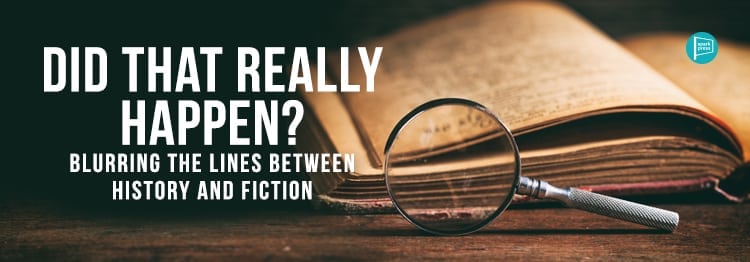 Did That Really Happen? Blurring the Lines Between History and Fiction
Did That Really Happen? Blurring the Lines Between History and Fiction
Kari Bovée
Writing historical fiction can be tricky. Where does the history end and the fiction begin? We’ve all seen historical novels, television shows, and movies where the writers and directors take creative license with the history to make the story more compelling. We’ve seen iconic historical figures become involved in situations that might never have happened, fall in love with people who might never have existed, or take on a job or an endeavor that we never imagined. Sometimes timelines are skewed, and things happen closer together or further apart than the history books tell us.
But how far is too far?
In writing historical fiction, it is essential to know the history and take into account all of the historical data that is provided to you. Because, in reality, even non-fiction historical accounts are often distorted. Why? Because every writer has a personal bias. Every writer puts their own interpretation and perception onto the page.
Much of history is passed down through lore and the retelling of stories. It’s like a game of telephone. Perceptions of the truth often differ or become embellished or diminished in time. It can’t be helped. It’s human nature.
I recently wrote a blog post on Anne Boleyn, the woman history loves to hate. Countless books, movies, and television dramas have portrayed this compelling woman in history. Historians agree the defining factor Henry VIII could not live with was the idea that Anne Boleyn, his wife at the time, had slept with many men—including her brother— in an attempt to bear a son and save her floundering marriage. There is no evidence that she did or did not commit these crimes, but she was executed nonetheless. History and culture love to tell the story as if she was guilty of the crimes because it makes the story all the more fascinating and exciting.
The key is to be as accurate as possible, given the information you have, and most importantly, to make your story believable. You wouldn’t write about someone in the 1950s using a cell phone, or describe specific flora and fauna in a region where it doesn’t exist. Be smart about it. If you want your historical figure to act in a way or be something that history did not record, make sure you do your research to see if historical accounts of him or her support that idea.
In my series, I’ve made Annie Oakley, a famous and iconic person, an amateur sleuth. I’ve put her in emotional and intellectual situations that may or may not have existed within the framework of what we know about her, and her life. I took what we know of her through history and created a different reality for her. Based on my research, most accounts agreed she was gutsy, smart, lovable and loving, and incredibly talented at something a woman rarely pursued: sharpshooting. And, she bested most men in her field. She did not live the life of an ordinary woman in 1885.
Given that information, as well as the scope of the Wild West Show’s travels and what I’ve learned about Annie’s decisions, actions, and experiences, I thought she would make an excellent amateur detective. She would be one who is driven by seeking the truth and finding justice.
Is the telling of my story wholly accurate and factual? Absolutely not. Does it concern me occasionally as I’m getting ready to birth this series into the world that people will not like my taking creative license with such a well-known, beloved character, and how I’ve portrayed her life? Most definitely.
It’s easy to get caught up in the fear that what we, as historical fiction writers, have portrayed in our stories will be judged or misinterpreted. In those instances, I have to remind myself that I have done my homework, and I am writing fiction—not a biography or a non-fiction account of events that took place in the late 1800’s.
And I also remind myself that, for me, the most exciting part of writing a book of historical fiction always comes down to that theoretical question: what if?

Leave A Comment